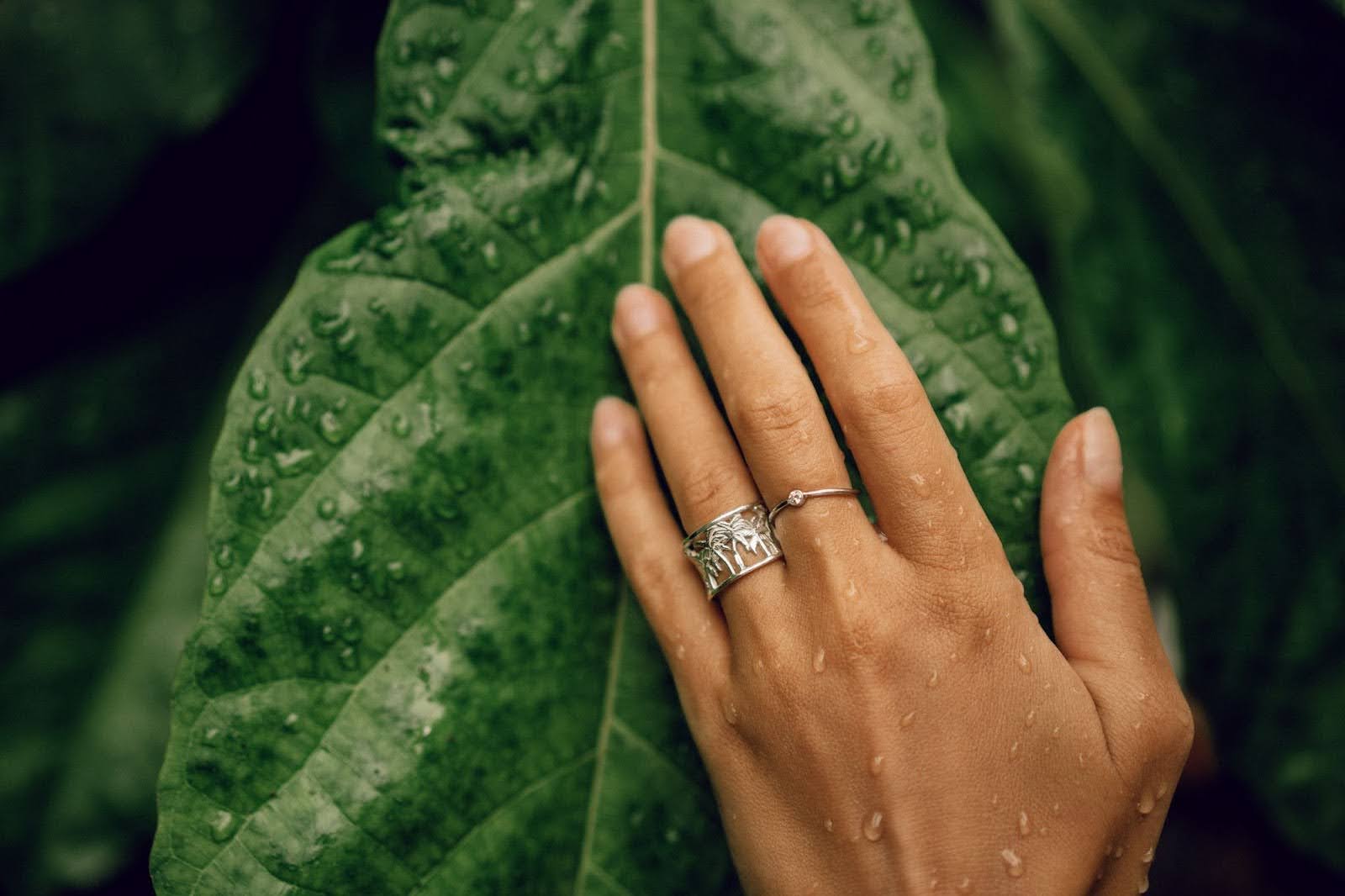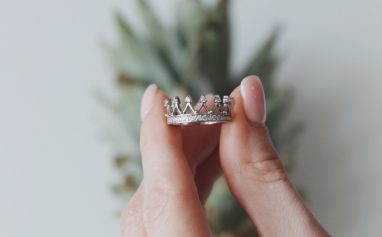When it comes to jewelry, most of us focus on style, sparkle, and that perfect fit. But for millions of people, especially those with sensitive skin, choosing the right metal is about more than just aesthetics—it’s about avoiding uncomfortable or even painful allergic reactions. In fact, studies suggest that approximately 10-15% of the population is allergic to certain metals, with nickel being the most common culprit. If you’ve ever experienced redness, itching, or a rash after wearing a piece of jewelry, you might be one of those people. This is where hypoallergenic metals come in.
In this guide, we’ll explore everything you need to know about hypoallergenic metals, from what they are and why they’re important, to the best options available and how to find quality jewelry that won’t irritate your skin. And if you’re on the hunt for beautiful, hypoallergenic jewelry at great prices, we’ll also introduce you to Nakassi, one of the best online stores for high-quality jewelry that combines style, comfort, and affordability.
What Are Hypoallergenic Metals?
Hypoallergenic metals are materials that are less likely to cause allergic reactions. The term “hypoallergenic” literally means “less likely to cause an allergy.” For people with metal sensitivities, wearing jewelry made from these metals can prevent uncomfortable reactions like redness, itching, or swelling.
Why Are Some Metals Allergenic?
The most common allergenic metal is nickel, which is often used in alloys to make jewelry stronger or more affordable. When nickel comes into contact with the skin, it can cause an allergic reaction known as contact dermatitis. This is especially true for earrings and other body jewelry, where the metal is in close contact with the skin for extended periods. Other metals, such as copper or certain alloys in gold or silver, can also cause reactions in sensitive individuals.
Common Hypoallergenic Metals
Titanium
Stats and Facts: Titanium is known for its biocompatibility, which is why it’s used in medical implants. It’s incredibly durable and resistant to corrosion, making it a top choice for hypoallergenic jewelry.
Why It’s Great: Lightweight and strong, titanium is perfect for everyday wear. It’s also available in various finishes, from polished to matte, so you can find a style that suits your taste.
Platinum
Stats and Facts: Platinum is one of the most hypoallergenic metals available. According to the World Platinum Investment Council, platinum is 30 times rarer than gold and is often used in its purest form in jewelry.
Why It’s Great: Platinum’s naturally white sheen doesn’t tarnish, making it both beautiful and low-maintenance. It’s also incredibly durable, making it ideal for wedding bands and engagement rings.
Stainless Steel
Stats and Facts: Surgical-grade stainless steel, especially grades like 316L, is widely recognized as hypoallergenic. This metal is also affordable, making it a popular choice for those looking for hypoallergenic jewelry on a budget.
Why It’s Great: Stainless steel is tough, rust-resistant, and available in a variety of styles. Plus, it’s often used in modern, minimalist designs, making it perfect for everyday wear.
Niobium
Stats and Facts: Niobium is a less common but highly effective hypoallergenic metal. It’s naturally resistant to corrosion and is often anodized to create vibrant colors.
Why It’s Great: If you’re looking for something unique, niobium offers a range of colors and finishes. It’s also non-toxic and doesn’t react with skin, making it a safe bet for sensitive ears.
Palladium
Stats and Facts: Palladium belongs to the platinum family and shares many of its hypoallergenic properties. It’s often used in white gold alloys to provide strength without causing irritation.
Why It’s Great: Palladium is a great alternative to platinum, offering similar benefits at a lower price point. Its naturally white color doesn’t require rhodium plating, which is a bonus for those looking to avoid potential allergens in plated metals.
24K Gold
Stats and Facts: Pure 24-karat gold is hypoallergenic because it doesn’t contain any of the alloy metals (like nickel) that can cause reactions. However, it’s also very soft, so it’s often mixed with other metals for added durability.
Why It’s Great: While 24K gold isn’t practical for every piece of jewelry, it’s a great option for simple designs where the softness of the metal isn’t an issue. It’s also a timeless, luxurious choice.
How to Choose Hypoallergenic Jewelry
When shopping for hypoallergenic jewelry, there are a few key things to keep in mind:
- Check the Metal Content: Always check the metal content of jewelry before purchasing. Look for labels like “nickel-free,” “hypoallergenic,” or specific metal grades (like 316L stainless steel) that are known to be safe for sensitive skin.
- Consider the Coating: Some jewelry is coated with hypoallergenic materials, but the underlying metal might still cause a reaction once the coating wears off. Opt for pieces made entirely of hypoallergenic metals for the best results.
- Quality Matters: Higher-quality metals tend to be purer and less likely to cause reactions. Investing in well-made jewelry can save you from discomfort and allow you to enjoy your pieces for years to come.
Where to Buy Hypoallergenic Jewelry
If you’re looking for beautiful, hypoallergenic jewelry that doesn’t break the bank, Nakassi is your go-to online store. Nakassi specializes in a wide range of jewelry that blends traditional craftsmanship with modern designs, offering pieces that are not only stylish but also safe for sensitive skin. Whether you’re in the market for titanium earrings, platinum rings, or niobium necklaces, Nakassi has something for everyone.
Why Choose Nakassi?
- Affordability: Nakassi offers some of the best prices online, ensuring you get high-quality, hypoallergenic jewelry without overpaying.
- Diverse Selection: From classic to contemporary, Nakassi’s collection features a variety of styles to suit any taste.
- Quality Assurance: All jewelry at Nakassi is carefully crafted from the finest materials, ensuring that each piece is both beautiful and comfortable to wear.
The Future of Hypoallergenic Jewelry
As awareness of metal allergies grows, more and more people are turning to hypoallergenic options. The global jewelry market is expected to reach over $500 billion by 2030, and hypoallergenic metals are set to play a significant role in this growth. With consumers becoming more conscious of what they’re putting on their skin, the demand for safe, non-irritating metals is only going to increase.
Conclusion
Choosing hypoallergenic metals is not just about avoiding allergic reactions; it’s about finding jewelry that you can wear comfortably, confidently, and without compromise. Whether you’re looking for something classic or contemporary, hypoallergenic metals like titanium, platinum, and stainless steel offer stylish solutions that are kind to your skin. And with Nakassi, you don’t have to sacrifice style or budget to find the perfect piece.
So, the next time you’re shopping for jewelry, remember: your skin deserves the best. Explore Nakassi’s collection of hypoallergenic jewelry today and discover pieces that blend beauty, comfort, and quality like never before.

Brijesh brings a decade of experience in SEO and a deep love for jewelry to his writing. He excels at creating content that shines both on the page and in search engines, ensuring every story about gems and craftsmanship reaches the right audience.








